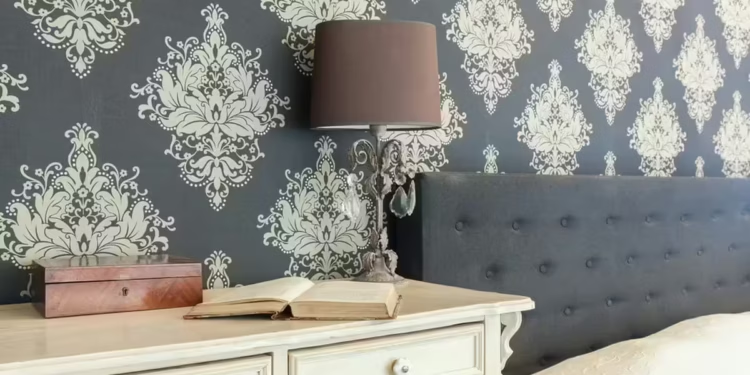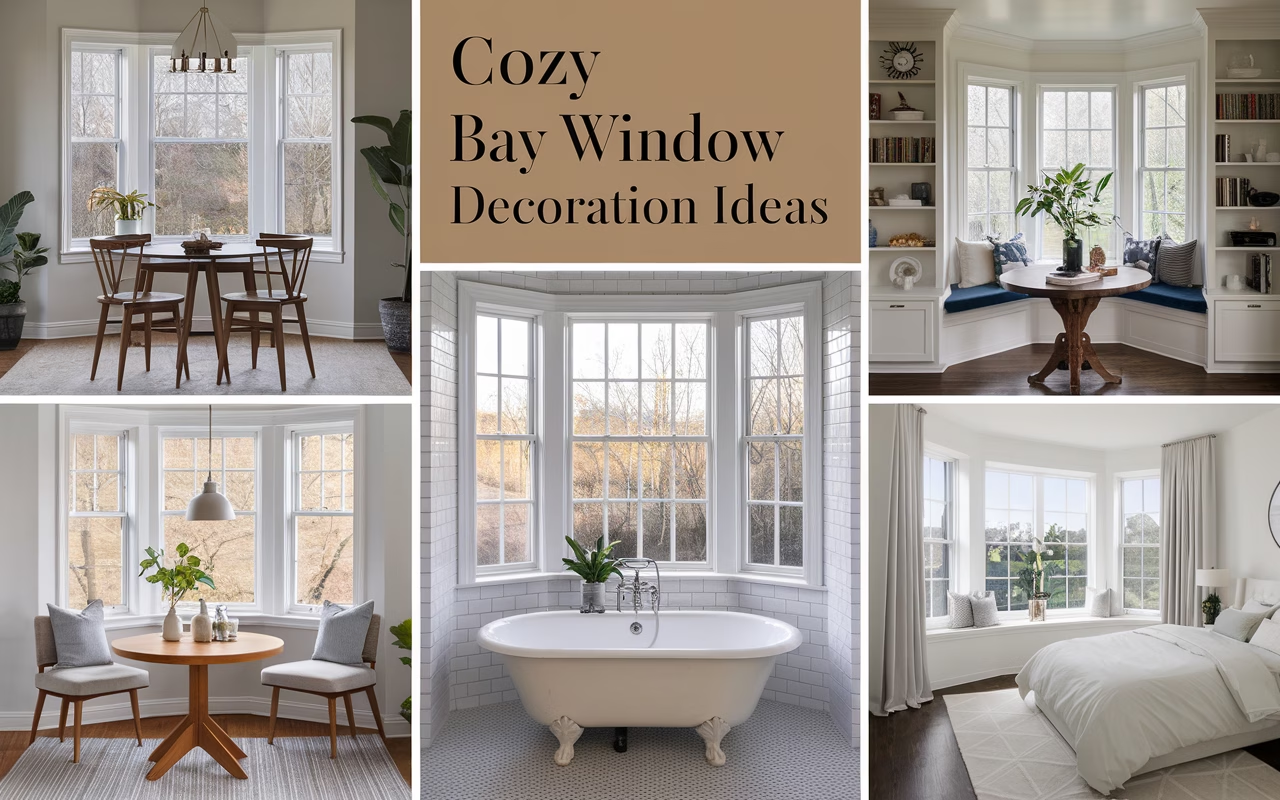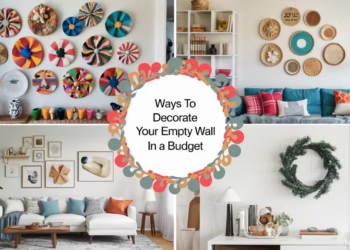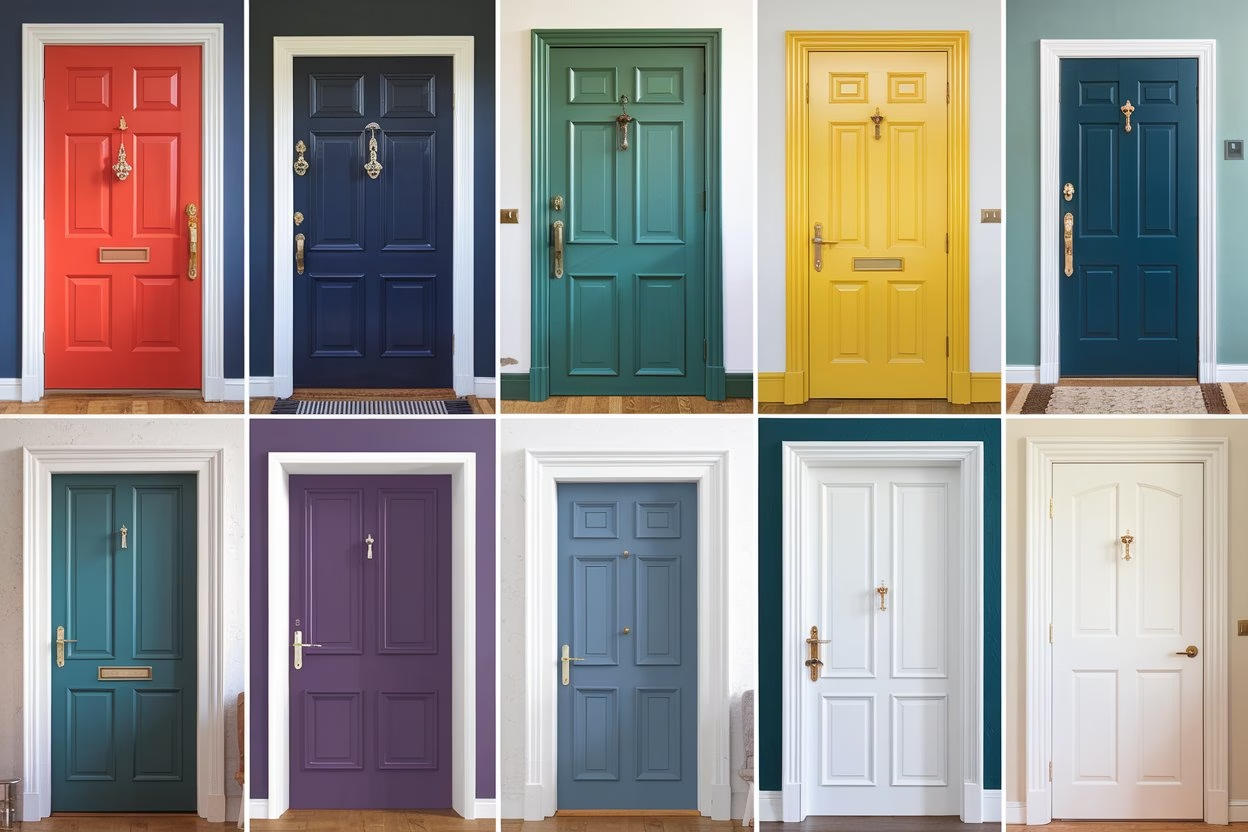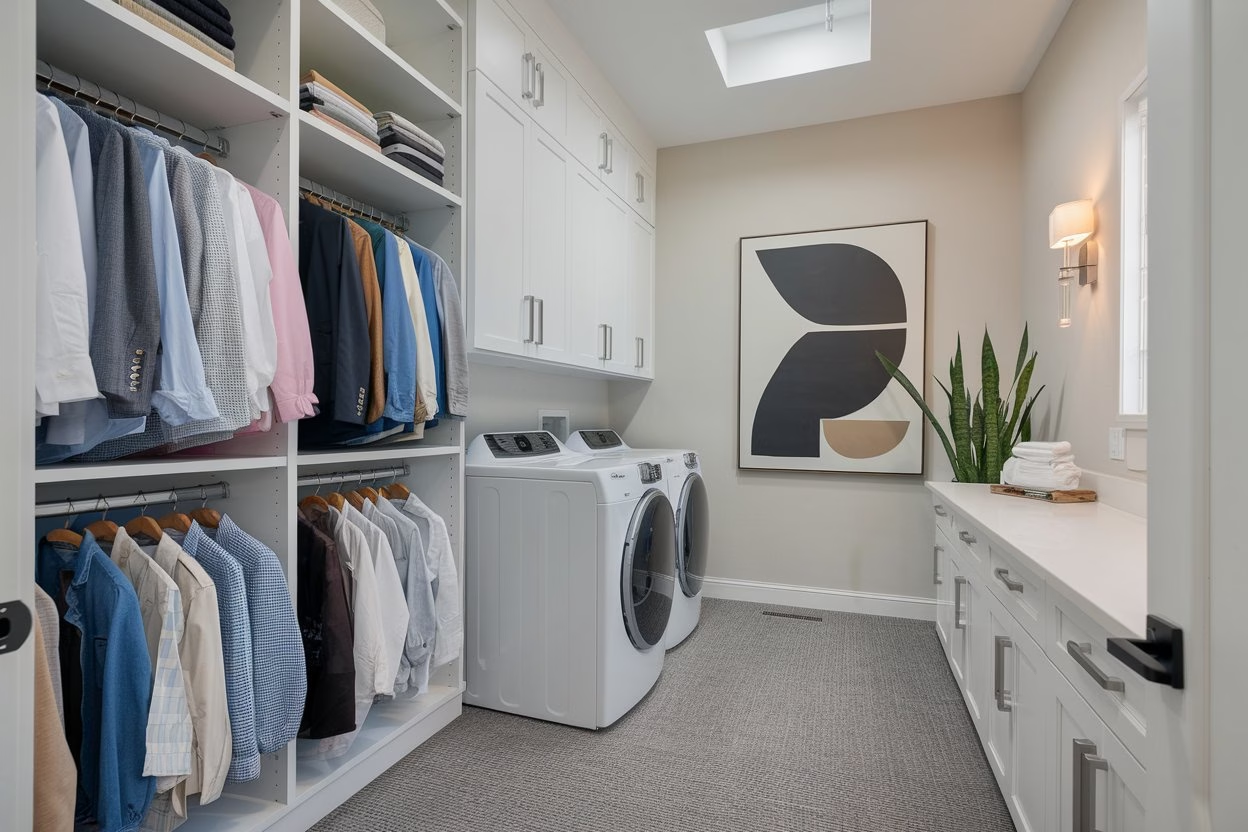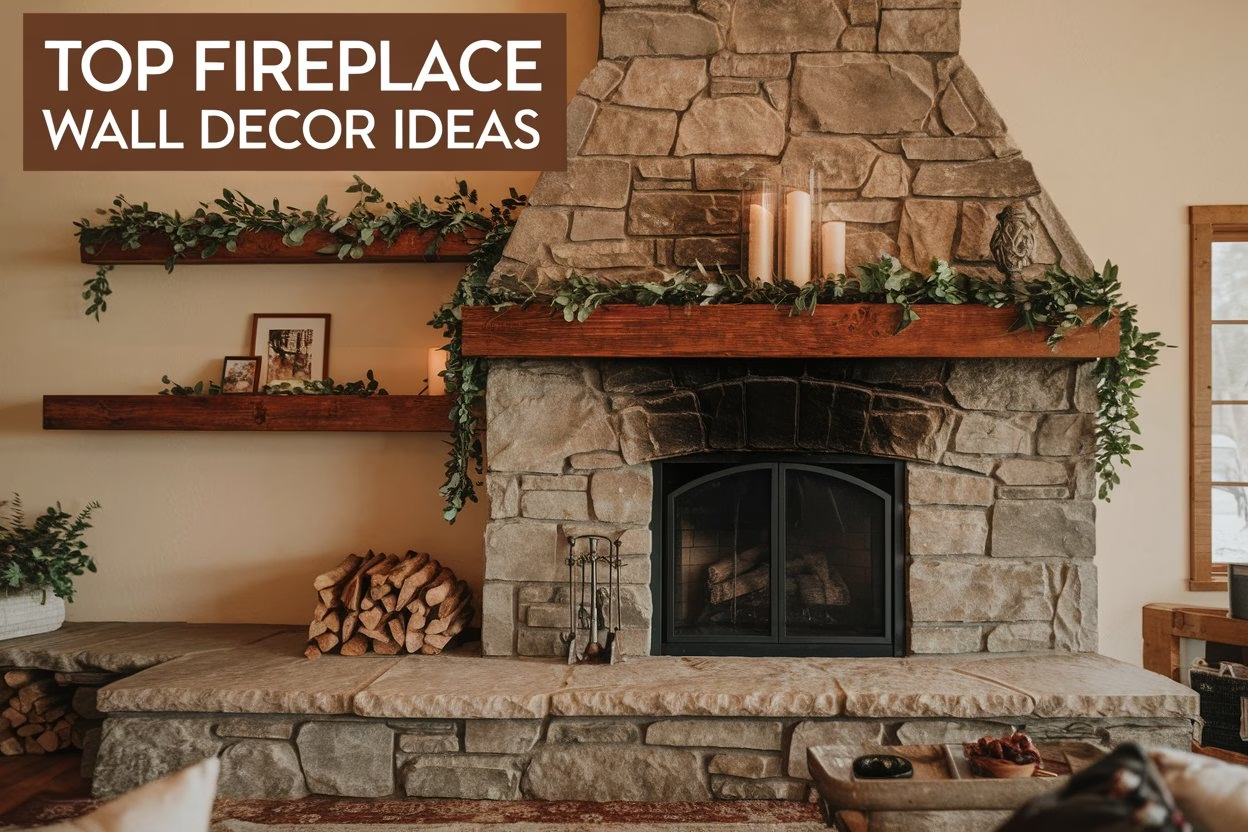In design, wallpaper refers to a decorative paper that is applied to the interior walls of a room or space. Wallpaper can be made of a variety of materials, and can be printed with a wide range of patterns, designs, and colors.
Wallpaper has been used for centuries as a way to add interest, texture, and color to interior spaces. In the past, wallpaper was often a symbol of wealth and status, as it was expensive and time-consuming to produce. Today, wallpaper is still popular in both residential and commercial settings and can be used to create a range of design effects, from subtle and understated to bold and dramatic. So, what are wallpaper types? Ways to use it? Color matches…Discover the wallpaper secret and elevate your home decor in .
Which type of wallpaper should I choose?
It’s important to consider the following factors when choosing a wallpaper for your home, and to select a type of wallpaper that meets your needs, preferences, and budget.

Here are some advantages and disadvantages of different types of wallpapers:
Vinyl wallpaper:
Advantages:
- Durable and long-lasting;
- Easy to clean and maintain;
- Resistant to moisture and humidity, making it ideal for bathrooms and kitchens;
- Available in a wide range of colors and patterns.
Disadvantages:
- Can be difficult to remove;
- May not be as breathable as other types of wallpaper, which can lead to moisture buildup and potential mold growth;
- May not be as environmentally friendly as other types of wallpaper, as it is made from synthetic materials.
Non-woven wallpaper:
Advantages:
- Easy to hang and remove;
- Resistant to tearing and ripping;
- Breathable, allowing for better air circulation and moisture control;
- Available in a wide range of colors and patterns.
Disadvantages:
- Can be more expensive than other types of wallpaper;
- May not be as durable as vinyl wallpaper;
- May not be as resistant to moisture as vinyl wallpaper.
Fabric wallpaper:
Advantages:
- Offers a unique and luxurious look and feel;
- May be more environmentally friendly than vinyl wallpaper, as it is often made from natural materials like cotton or silk;
- Can be painted over to achieve a custom look;
- May be more breathable than vinyl wallpaper.
Disadvantages:
- Can be more difficult to hang than other types of wallpaper;
- May require more maintenance and cleaning than other types of wallpaper;
- May not be as durable as vinyl wallpaper;
- May be more prone to fading or discoloration over time.
Textured wallpaper:
Advantages:
- Can add depth and dimension to a room;
- Can help hide imperfections on walls;
- Available in a wide range of textures and patterns.
Disadvantages:
- Can be more difficult to clean than smooth wallpaper;
- Can be difficult to remove;
- May not be as versatile as other types of wallpaper, as it may not be suitable for all styles or rooms.
Paintable wallpaper:
Advantages:
- Can be painted to achieve a custom look;
- Can be a good option for covering up imperfections on walls;
- Available in a wide range of textures and patterns.
Disadvantages:
- Can be more expensive than other types of wallpaper;
- May require more preparation and installation time than other types of wallpaper;
- May not be as durable as vinyl wallpaper.
Patterns and style
There are many different types of wallpaper patterns to choose from, and selecting the right pattern for your decor style can help create a cohesive and harmonious look in your space. Here are some popular wallpaper patterns and the decor styles they work well with:
Floral:
Floral wallpaper is a classic pattern that can work well in a variety of decor styles, including traditional, vintage, farmhouse, and shabby chic. This pattern features delicate, romantic motifs in soft colors and can add a feminine touch to a room.

Geometric:
Geometric wallpaper is a modern pattern that can work well in contemporary, minimalist, and mid-century modern decor styles. This pattern features bold, graphic shapes in a range of colors and can add a sense of energy and movement to a space.
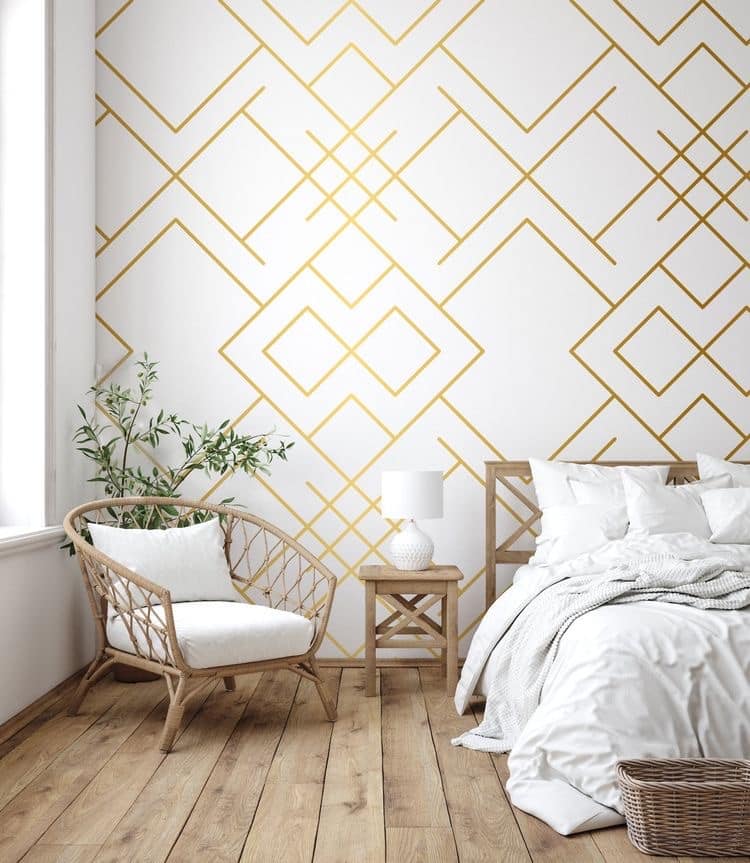
Striped:
Striped wallpaper is a timeless pattern that can work well in a variety of decor styles, including traditional, coastal, and nautical. This pattern features vertical or horizontal stripes in a range of colors and can help create a sense of height or width in a room.

Damask:
Damask wallpaper is a classic pattern that can work well in traditional and vintage decor styles. This pattern features intricate, elegant motifs in a range of colors and can add a sense of luxury and sophistication to a space.
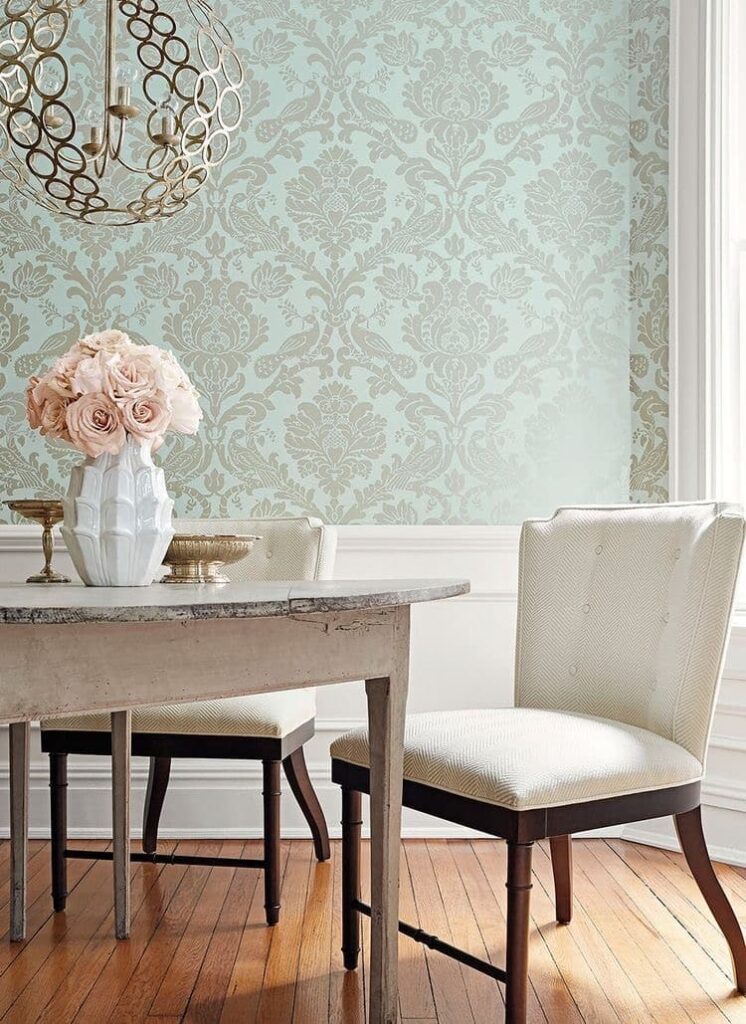
Toile:
Toile wallpaper is a French-inspired pattern that can work well in traditional, cottage, and country decor styles. This pattern features scenic or floral motifs in a single color on a light background and can add a sense of charm and romance to a space.
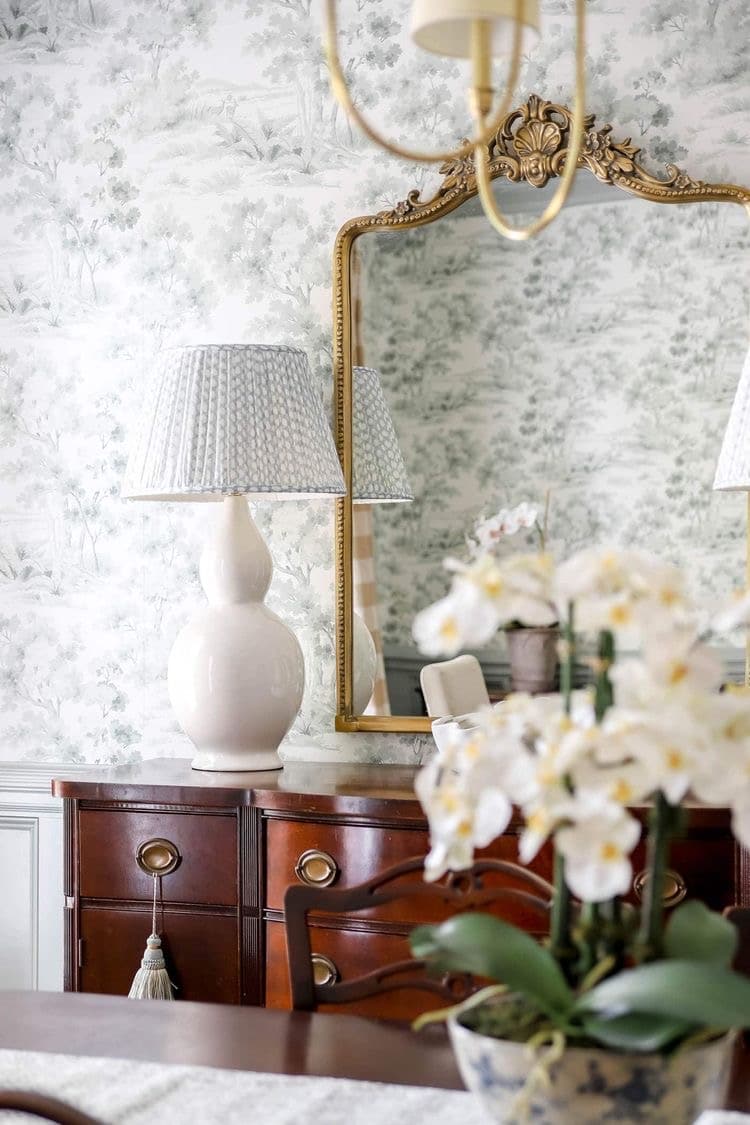
Textured:
Textured wallpaper is a versatile pattern that can work well in a variety of decor styles, including modern, rustic, and industrial. This pattern features a range of textures, from brick to wood to metallic, and can add depth and dimension to a room.
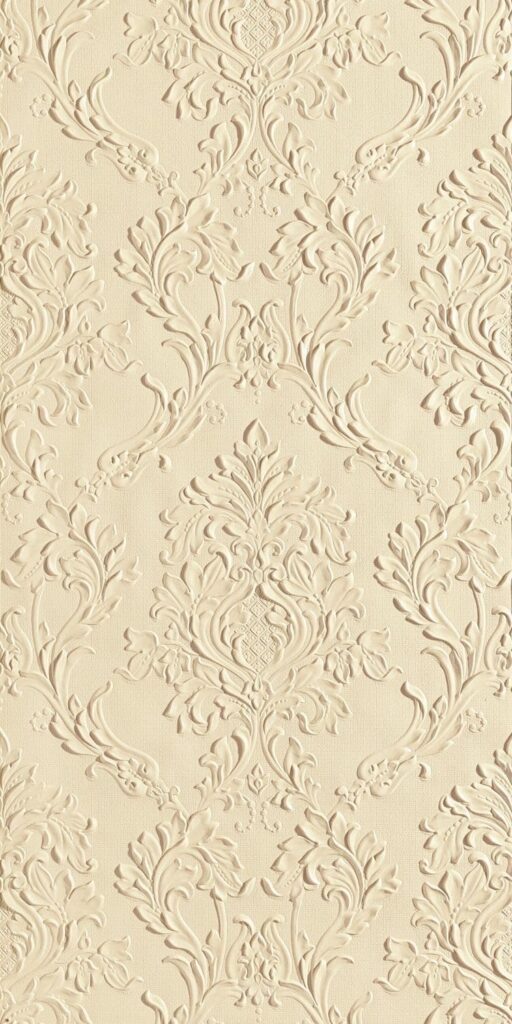
When choosing a wallpaper pattern, it’s important to consider the overall decor style of your space and to select a pattern that complements and enhances that style. Additionally, it’s important to consider the scale and color of the pattern and to ensure that it works well with the other elements in the room, such as furniture, textiles, and accessories.
Wallpaper: good or bad choice for your home decor
Whether or not using wallpaper is the best choice for home design depends on a variety of factors, including personal preferences, the style of the home, and the specific room being designed. Here are some advantages and disadvantages of using wallpaper:
Versatility: There are countless options for wallpaper designs and patterns, which makes it easy to find one that suits your personal style and complements your existing decor.
Visual Interest: Wallpaper can add texture, depth, and visual interest to a room, making it a great option for creating an accent wall or adding character to a space.
Durability: High-quality wallpaper can last for years without fading or peeling, making it a long-lasting and durable option.
Cost: Depending on the quality of the wallpaper and the size of the room, wallpapering can be an expensive option compared to painting.
Time-consuming: Applying wallpaper can be a time-consuming process, requiring careful measurement, cutting, and installation.
Removal: Removing wallpaper can be a difficult and messy process, especially if it has been glued down for many years.
In summary, using wallpaper can be a great choice for adding visual interest and character to a room, but it may not be the best option for everyone. It is important to consider the pros and cons and to carefully evaluate your options before making a decision.
Choosing the color of wallpaper
Choosing the color of your wallpaper is an important decision as it can impact the overall feel and atmosphere of the room. Here are some things to consider when selecting the color of your wallpaper:
Room size: The color of the wallpaper can have an effect on the perceived size of the room. Lighter colors tend to make a room appear larger, while darker colors can make a room feel more cozy and intimate.
Natural light: The amount of natural light in the room can also impact your color choice. If the room has a lot of natural light, you may be able to use a darker color without making the room feel too dark. If the room has limited natural light, a lighter color may be a better choice to help brighten up the space.
Existing decor: Take into consideration the existing decor in the room when selecting a wallpaper color. If the room already has a lot of bold colors or patterns, you may want to choose a more neutral wallpaper color. If the existing decor is more neutral, a bold wallpaper color or pattern can add interest and personality to the space.
Mood: The color of the wallpaper can impact the mood of the room. Consider the mood you want to create in the room – for example, a calming and relaxing atmosphere may be achieved with cool colors like blue or green, while warmer colors like red or yellow can create a more energizing and stimulating atmosphere.
Personal preference: Ultimately, the color of the wallpaper comes down to personal preference. Choose a color that you love and that reflects your personal style.
Mix and match colors
The choice of wall paint color to go with a particular wallpaper color and pattern depends on several factors, including personal preference, existing decor, and the desired mood of the space. Here are some general guidelines:
Neutral wallpaper: If you have a neutral wallpaper, such as white or beige, you can choose a bolder paint color for the walls to add interest and depth to the space. Popular choices include deep blues, greens, or grays.
Bold wallpaper: If you have a bold wallpaper with a strong pattern or color, it’s generally best to choose a more neutral paint color for the walls. This will help balance the space and prevent it from feeling too busy. A soft gray or beige can be a good choice.
Floral wallpaper: For floral wallpaper, you can choose a paint color that matches one of the colors in the pattern. For example, if the wallpaper has pink flowers, a pale pink or blush paint color on the walls can create a cohesive look.
Geometric wallpaper: If you have geometric wallpaper, you can choose a paint color that complements one of the colors in the pattern. For example, if the wallpaper has a blue and white geometric pattern, a soft blue paint color on the walls can tie the space together.
Trend wallpaper patterns
Wallpaper patterns are constantly evolving with current trends and styles. Here are some popular wallpaper patterns that are on trend:
Botanical prints:
Botanical prints, featuring lush greenery and flowers, are a popular trend in wallpaper design. They bring a natural and organic feel to any space and can be used in a variety of different styles.
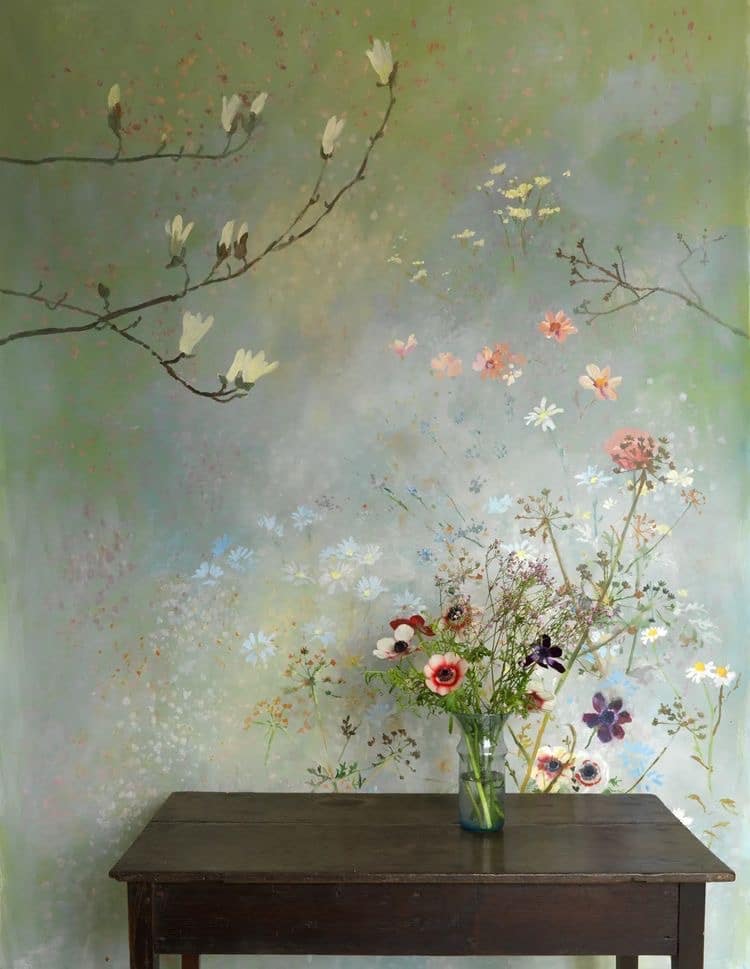
Geometric shapes:
Geometric shapes, such as triangles, hexagons, and diamonds, are also on-trend in wallpaper design. They can add a modern and bold touch to a space, and are often available in a variety of colors and sizes.

Textured finishes:
Wallpaper with textured finishes, such as embossed patterns or metallic accents, are also popular in modern design. These wallpapers add depth and dimension to a space, and can create a luxurious and sophisticated look.
Abstract designs:
Abstract wallpaper designs, featuring bold colors and shapes, are also a trend in wallpaper design. These wallpapers can add a playful and artistic touch to a space, and are often available in a variety of styles and color palettes.
Tropical prints:
Tropical prints, featuring palm leaves, exotic flowers, and bright colors, are also on-trend in wallpaper design. These wallpapers can create a relaxed and laid-back atmosphere, perfect for a beachy or bohemian style.
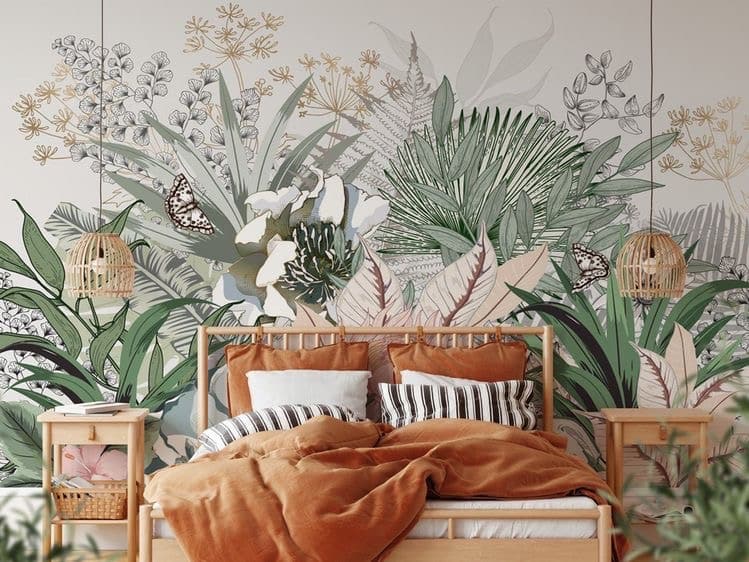
Overall, wallpaper patterns are constantly evolving with current trends and styles, so there is no shortage of options to choose from when it comes to selecting a wallpaper for your space.
Where we can use it
The best room to use wallpaper in depends on your personal preferences and the style of your home. However, some popular rooms to use wallpaper in include:
Living room:
The living room is often the focal point of the home, making it a great place to experiment with bold patterns and colors. A wallpaper accent wall or a statement print can add visual interest and personality to the space.

Dining room:
The dining room is another popular room for wallpaper because it’s a space where you can really showcase your style. Consider using a dramatic print or texture to create a sense of elegance and sophistication.
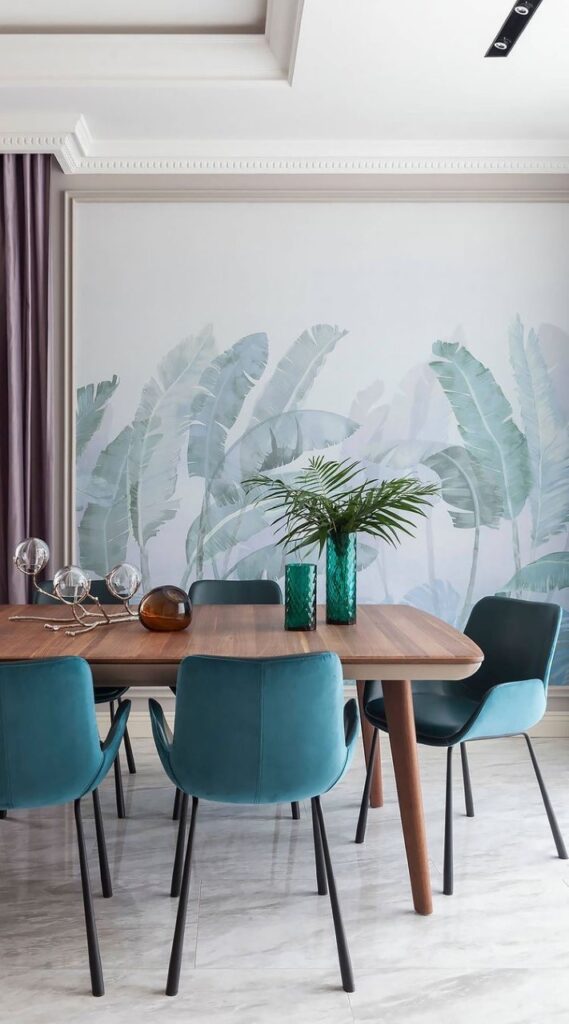
Bedroom:
Using wallpaper in the bedroom can create a cozy and intimate atmosphere. Consider using a subtle pattern or texture for a soothing effect, or a bold print for a more dramatic statement.
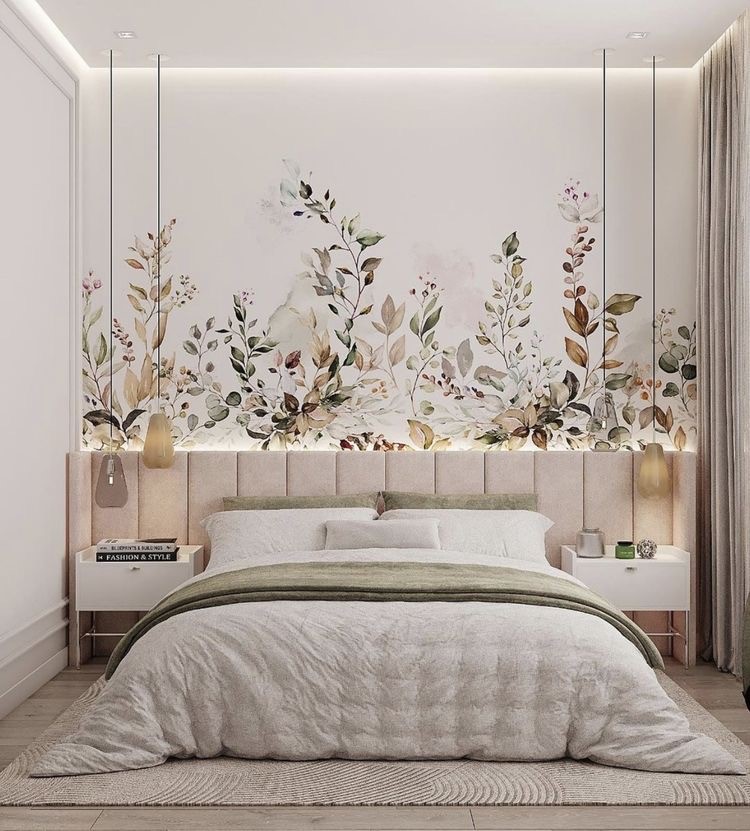
Bathroom:
Using wallpaper in the bathroom can add visual interest and personality to the space. Just be sure to choose a moisture-resistant wallpaper and take extra precautions during installation.

Entryway:
Using wallpaper in the entryway can create a welcoming and inviting atmosphere for guests. Consider using a bold print or texture to create a sense of drama and intrigue as soon as guests walk through the door.
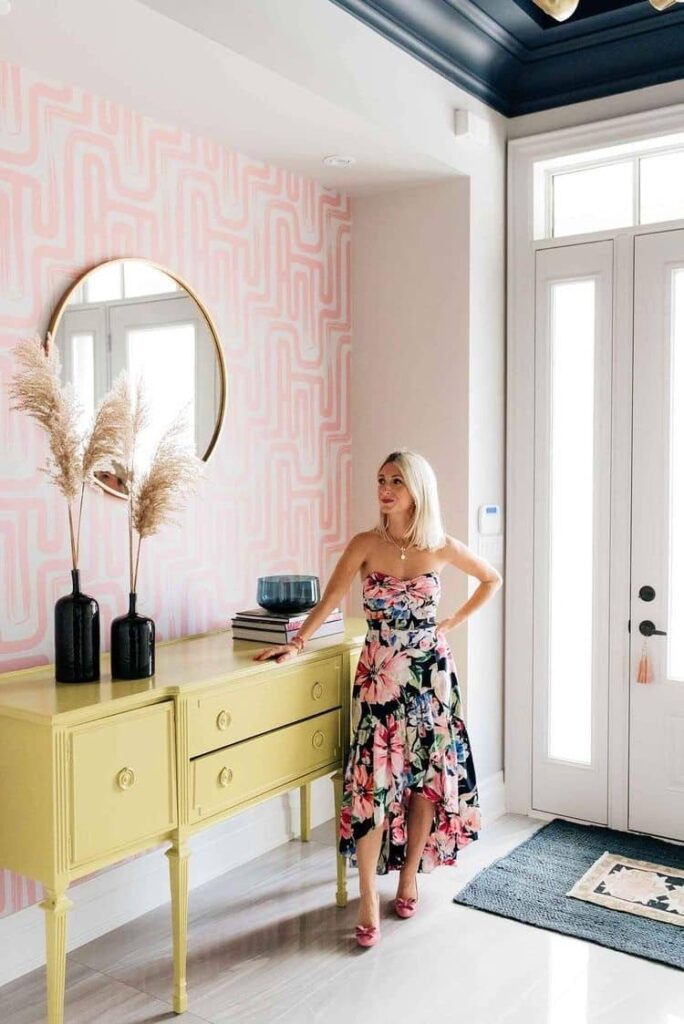
Ultimately, the best room to use wallpaper in is the one that you feel will benefit the most from its visual impact. Whether you choose to use it as an accent or wallpaper an entire room, using wallpaper is a great way to add personality and style to your home.
All the walls or only one wall
To wallpaper all the walls or just one wall depends on the size of the room, the style of the wallpaper, personal preference, and of course your budget.
In general, using wallpaper on one wall as an accent can be a great way to add visual interest and depth to a room without overwhelming the space. However, if you’re using a more subtle wallpaper, or have a larger room to work with, wallpapering all the walls can create a cohesive and elegant look.
Ways to use wallpaper
Wallpaper can be used in a variety of ways throughout your home to add color, pattern, and texture. Here are some common places where you can use wallpaper:
Accent wall:
One of the most popular ways to use wallpaper is on an accent wall. This can be a great way to add a pop of color or pattern to a room without overwhelming the space. Choose a wall that is a natural focal point, like the wall behind a bed or a fireplace.

Ceiling:
Wallpapering your ceiling can be a bold and unexpected way to add interest to a room. Consider using a subtle pattern or texture in a light color to avoid making the space feel too busy.
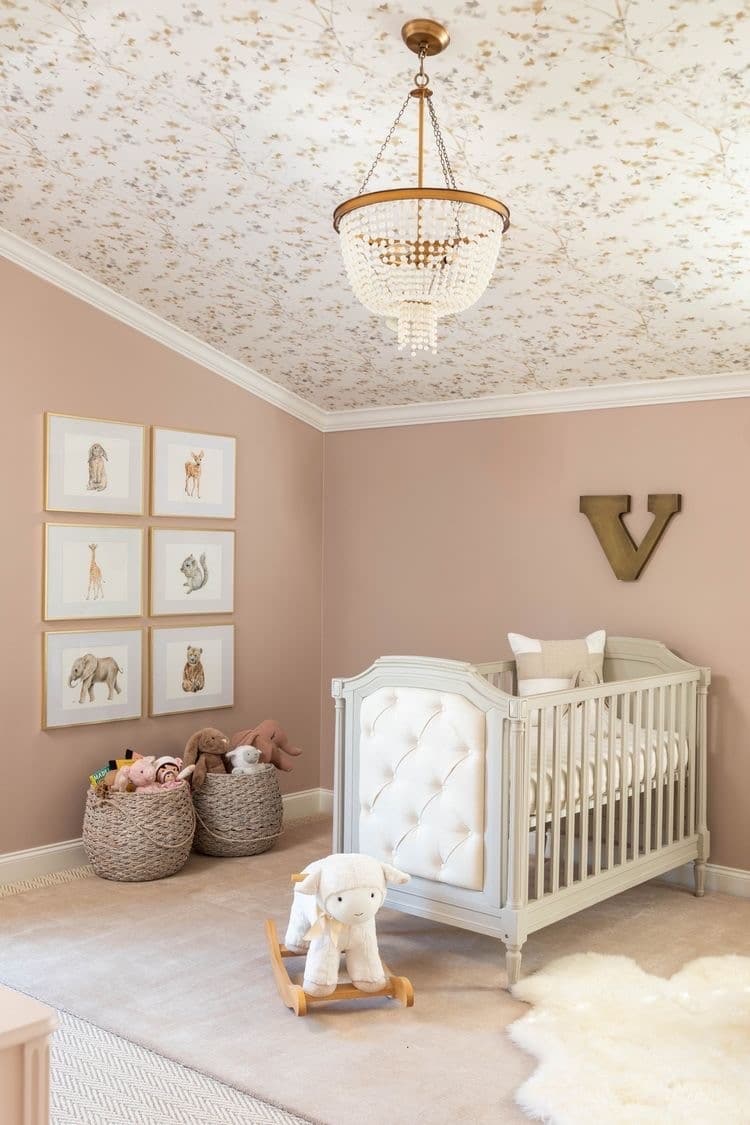
Backsplash:
In a kitchen or bathroom, you can use wallpaper as a backsplash instead of traditional tile. Look for wallpaper that is water-resistant and easy to clean.

Stair risers:
Using wallpaper on stair risers can be a fun and unexpected way to add color and pattern to your home. Consider using a different pattern on each riser for a playful look.
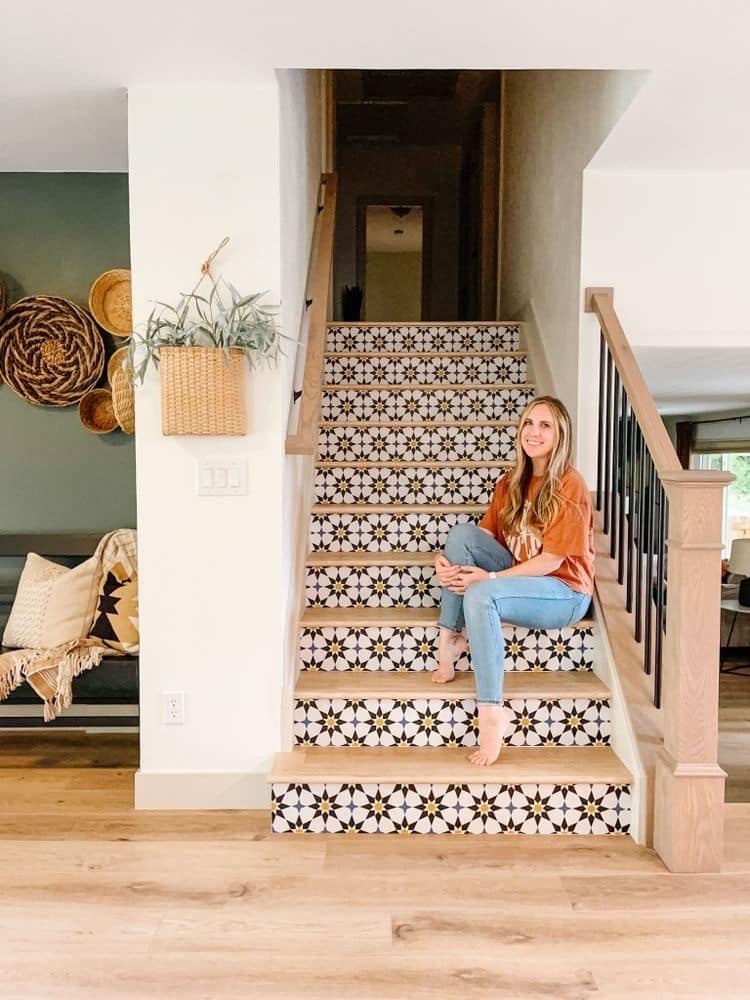
Closet or pantry:
Using wallpaper in a closet or pantry can be a fun way to add personality to a small space. Look for a bold pattern or color that will make the space feel special.

Furniture:
If you have a piece of furniture that needs a little love, you can use wallpaper to give it a fresh new look. Consider using wallpaper to line the back of a bookshelf or to cover the panels of a dresser.

Window wall paper
Window wall paper has become a cornerstone of modern home decor, offering a delightful fusion of aesthetics and imagination. These wallpapers ingeniously expand the boundaries of indoor spaces, introducing captivating vistas and evocative scenes that elevate the entire atmosphere. By strategically placing window wallpapers in living rooms, bedrooms, or even kitchens, homeowners can instantaneously transport themselves to their favorite landscapes or dream destinations.
Whether it’s a serene countryside, a bustling urban panorama, or an enchanting beachfront view, these wallpapers breathe life into walls, making them dynamic storytelling canvases. In the realm of home decor, window wallpapers have truly redefined the art of personalization, enabling individuals to create a haven that resonates with their passions and visions.
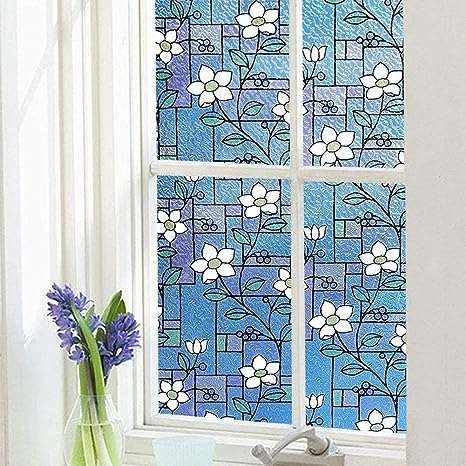
Options to do when you get bored of your wallpaper
If you choose a wallpaper and later get bored of it, there are a few options you can consider:
Change it:
You can always remove the existing wallpaper and replace it with a new one. While this can be a time-consuming and potentially expensive process, it will give you the opportunity to refresh the look of the room and find a new wallpaper that better suits your style.
Paint over it:
If removing the wallpaper is not an option, you can consider painting over it instead. This can be a quicker and more affordable option than removing and replacing the wallpaper, but it will require careful preparation to ensure that the paint adheres properly.
Add accessories:
If you don’t want to make major changes to the wallpaper, you can consider adding accessories or decor elements that complement or distract from the wallpaper. For example, you could add colorful throw pillows or a decorative rug that draws attention away from the walls.
How to remove wallpaper?
While others may balk at the idea of removing existing wallpaper, everyone can do it. All you need is the right materials and patience. You also need to apply the right technique to avoid damaging the existing support. The different techniques applied will vary according to the type of substrate. Find out more.
The most economical way to remove wallpaper from the wall
You don’t need a professional to remove your wallpaper. What’s more, you won’t need to spend an astronomical sum, as all the ingredients are at hand. You don’t even need to go out and buy them, as all you need to do is heat up some water and add a little detergent.
Here’s how to remove your wallpaper:
- Heat some water in a pan and take a basin.
- Pour in the hot water and add a little detergent or washing-up liquid.
- Moisten the wall with a sponge.
- Wait a while for the water to soak in, i.e. about two minutes.
- Take a spatula and gently peel off from bottom to top.
- Be careful not to make any sudden movements that could damage the existing substrate.
Note that this technique is only effective on single-coat wallpapers.
The eco-friendly way to remove your wallpaper
There’s no shortage of methods for removing your old wallpaper from the wall. In addition to the economical method described above, there’s also the more ecological method. With the latter, you won’t need to heat any water, as you’ll be using cold water. Take a basin of water and mix half water and half white vinegar.
For extra effectiveness, you can add a teaspoon of baking soda. You’ll then need to soak the wall with the mixture and wait at least five minutes for it to take effect. As with the previous method, remove the wallpaper with a spatula. Be careful not to damage the wall. Take particular care if your wall is made of plasterboard.
What other methods are there for removing wallpaper?
There are other ways of removing wallpaper, whether vinyl or paper. Use the tips below to remove wallpaper without damaging the wall.
Choose a commercial product
If you don’t want to remove your wallpaper in an environmentally-friendly way, you can use commercially available products. Available from major retailers, they are just as effective. All you need to do is mix them with a little water.
A steam wallpaper remover
Did you know that some products are 100% effective? In fact, they’re ideal for thicker, older wallpaper. Steam strippers are particularly effective on the most spread-out surfaces. They are particularly expensive.
Notching wallpaper to remove it
If wallpaper is difficult to remove, use the most drastic method. To do this, slash your wallpaper little by little. Peel it off and tear it off bit by bit. Finish by applying a damp sponge and peeling off with a spatula.
But you can always call in a professional for a job well done. In this case, it’s best to ask for and compare several quotes.
